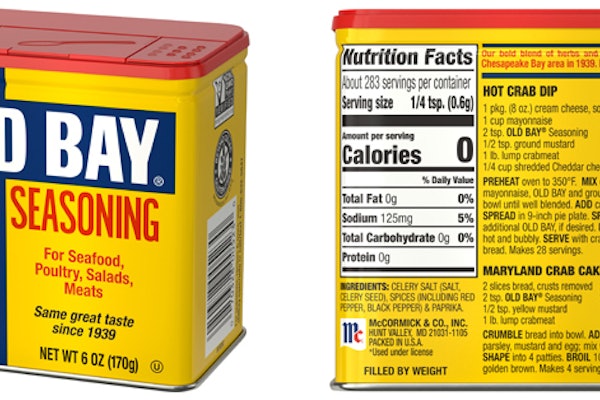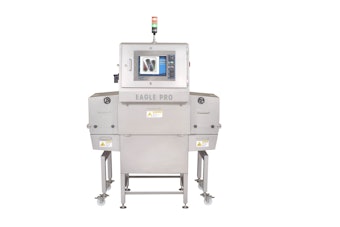However, many packaging professionals are frustrated with the “silo” corporate structure that separates operations from finance, marketing from engineering, and production from design.
Too often, this results in inefficient package development because each department is in a push-and-pull contest with every other department, and the fundamentals get lost in the mix. Forgotten are many simple common sense practices, such as: First, you have to be aware of what is possible!
Of course, anything is possible. It comes down to what you’re willing to pay for, or what is reasonable to hope for. Consult these strategies to help you manage reasonable expectations and more successful packaging operations.
1. Understand the problem. It’s curious that companies’ silos—which all intersect in the packaging function—are the exact opposite of the psychology of consumer choice. Consumers make holistic purchase decisions. They don’t independently evaluate discrete aspects. So while silos may be an effective “divide and conquer” method for production activities, they’re often ineffectual when it comes to generating holistic value propositions. Breakthrough value is to be found in the cohesion between attributes and disciplines. Ideally, product and package should be developed in concert with each other.
2. Remember the primary goal: Deliver the product safely. This effort should always be a blend of engineering, production, regulatory, and marketing departments. Engineering makes sure the packaging does its job, production makes sure it can be produced, regulatory makes sure it’s safe and has all the right information, and marketing identifies the key benefits. Each department should strive to gain more knowledge of the others for more efficient communications and for adaptability to changes. And don’t let unreasonable expectations cloud reality and judgment. Package development is a process that should never be rushed. Know what you need to achieve, but expect many questions and refinements along the way.
3. Assemble a cross-functional team. Essential team members include leaders from these departments: branding, marketing, sales, package design, innovation, engineering, procurement, and operations. Engage any outside design agencies or key suppliers early. Input from a packaging performance technician, quality assurance, or materials purchasing is also very advisable. Another key player could be a research analyst who can assist in determining package requirements during the creative process. And here’s a not-so-novel idea: Put these individuals in a single office location, or very near each other, physically.
4. Assign a leader. Designate a leader for the project; someone who wants the job and knows what it takes to get the job done and yet is open to suggestions. And let that person stick his or her nose into everything, and frequently. Give the development team a brand identity and unify them with a common purpose or goal. Consistent leadership should span the project from end-to-end to ensure continuity of vision and execution. “Hand-offs” can cause disruption and dilute the design intent. Create clear objectives and clear milestones. Boost morale with incentives such as awards, recognition, or speaking engagements.
5. Update team members frequently. Remove communication barriers so everyone can understand challenges that arise. Brand team meetings are essential. At the first kickoff meeting, hash everything out as thoroughly as possible. Get it all “on the table,” brainstorm, and involve all the stakeholders. Before even putting pen to paper or pointer to design file, ask these questions: Can you run it on the production line? Can you label it? Can you get all the information you need on it? Create and monitor frequent status reports that also share information about what is working and what isn’t—and whether you can still achieve the targeted ship date.
6. Readjust marketing briefs to reality. A truly cross-functional project team builds team synergies and develops good relationships. For instance, it’s important that marketing experts understand that aesthetic “improvements” don’t always add value in the consumers’ eyes. And engineers should be aware how graphic and structural design could make packages “speak” to end users. Avoid letting the packaging team fall into being pulled in two directions, between the marketing and sales/commercial teams or between operations and marketing. Everyone needs to work together to make sure strategies are aligned and timelines are successfully met.
7. Unify the marketing story. Ideally, the marketing story should be contained within the product concept itself and reflected unsullied in the packaging. Stakeholders need to drive the message of common goals foremost. Consider consumer expectations of efficiency and convenience, both in unpacking the secondary packaging and during use of the primary packaging. And don’t forget end-of-life considerations that the consumer might expect.
8. Know what you don’t know. Engage the design house and suppliers at the same time, and early. Understand your options clearly, and all the potential pitfalls. Carefully consider the pros and cons of custom and stock options, because custom packages are not as cost-prohibitive as the name suggests. Avoid vacillating on critical decisions that hold up the process. Remove late changes from the equation, because switching vendors or manufacturing locations at the last minute can be very costly in both money and time.
If you don’t know, ask! Or request to see production operations for yourself and speak with their experts.
9. Bring in design thinking. Embrace the new culture of sharing and open innovation. Build greater self-awareness in each team member so they can better understand the frames and motivations of themselves and others. This enables teams to operate from a collective strength versus a narrow position standpoint. The caution here is that “technology” or “process” is the solution, when in fact it’s simply part of a consideration set. The tension between design and production should be viewed as positive; each improves the other’s
core discipline.
10. But…avoid design by committee. At some point, everyone knows that too many cooks spoil the broth. Committees often produce a consensus that is not a unique brand proposition. “Watered-down” design is often the result. Recognize the conflicts inherent in the team and bring them out into the open. Have a structure to the process, and one gatekeeper who will make the critical calls, and the final decision. More innovation happens within a structure than without. Explore new ideas thoroughly, but hit progress deadlines religiously.
11. Be proactive instead of reactive. Avoiding poor decisions is the name of the game. It’s paying attention to the nitty-gritty details that often separates success from failure. Decide how the packaging department should be defined and commit to it. Is your packaging function more aligned with product development? Does it serve mostly a protective and quality control function? Is it mainly a vehicle for branding and marketing? And be mindful that change is inevitable and that there are consequences of change. It’s a continuous fight. Expect the organization’s definition of optimal packaging to evolve due to recurring product innovation, evolving packaging science, and emerging corporate strategies.
12. Empower packaging professionals. Empower packaging managers to make enterprise-wide solutions. If you give packaging personnel quality control functions and accountability, they are more likely to touch—and want to touch—all the points of the operation and effect the greatest positive change. Encourage employees in all departments to expand their knowledge bases to broader disciplines. Create avenues for internal alignment, but review and re-review possibilities, resources, timing, and costs periodically. Promote a solution-based approach, and use modeling to get approval on a proposed final package while still “in theory.”
13. Be prepared to deal with stakeholders who are not knowledgeable. First determine their level of “education.” Too often, there are unreasonable expectations of trouble-free packaging production. If necessary, appoint a neutral arbiter to give sound advice. Engage an expert prepress staff so that they can prepare for—and quickly communicate—any potential “surprises.” Plan ahead and allow time for production checks. Run frequent press checks just for color to save the expense of die-cutting or gluing during press checks.
14. Present the business case. Perform thorough cost comparisons that include entire supply chains and processes. Summarize proposals for management to demonstrate “wins” in cost savings that are not obvious. Train engineers to back up cost savings analyses and assess and quantify risks for management. And always be prepared to explain the organizational argument for creating more efficient packaging operations. A comprehensive strategy requires comprehensive engagement from—and communication between—all departments and senior management.
Liked this article? Download the Package Development Playbook here. Download the Labeling Playbook here.


























